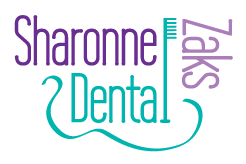extractions
Common reasons teeth may require removal
Tooth decay; ‘caries’ – Caries can be so severe or advanced that the central core/ ‘pulp’ (where nerves and blood vessels run in the tooth) becomes infected. If the tooth is unable to be rebuilt due to the depth of the decay it is unsuitable for root canal treatment and extraction is the only option.
Impacted wisdom teeth – Often there is not enough room in the mouth to accommodate these teeth. They commonly become impacted (stuck) which can cause infection and pain.
Orthodontics (braces) – You may have to have teeth extracted to make room for your other teeth to be brought into line as there is not enough space in the mouth for them all to fit. Teeth often grow through (‘erupt’) in very unfavourable positions when they are crowded together.
Periodontal disease – Bacterial infection under the gum destroys the ligaments which connect the tooth to the bone. As the disease progresses, the bone anchoring the tooth to the jaw begins to dissolve, resulting in the tooth becoming progressively more loose. Very mobile teeth are often uncomfortable and eventually become dangerous to leave in the mouth.
Trauma -Teeth that have been damaged by trauma are sometimes so badly damaged that they are unfortunately unsavable.
Medical conditions may require teeth to be extracted.
THE PROCESS
Initially the tooth and mouth will be thoroughly assessed to diagnose the situation. All treatment options will be discussed together and extraction confirmed and agreed as the best solution after careful consideration and informed consent. Replacement options for the tooth will be discussed as appropriate. Usually an x-ray is required as part of this assessment to evaluate the tooth roots underneath the gum and plan the extraction. If there is infection that has spread beyond the tooth (‘abscess’) a course of antibiotics may be required. The best timing of the extraction depends on your individual situation and will be discussed. It is vital that you inform me of all the medications you are taking, including over the counter products and all herbs,vitamins and supplements. They all have an influence, for example fish oil extends bleeding time.
Ways to complete the extraction
1) Under local anaesthetic in the chair: this is the preferred option the vast majority of the time. It is the simplest, most cost effective and ideal for most situations.
2) Under local anaesthetic with some sedation: this can either be a sedative tablet taken before the procedure eg Valium, or a sedating gas inhaled during the procedure. You are conscious but more relaxed; this is a helpful option if you are very anxious.
3) Under general anasethetic: usually reserved for very complex cases eg: four complex wisdom teeth. I will need to refer you to a specialist oral surgeon to carry this out as a half day procedure in a hospital.
TYPES OF EXTRACTION
There is a huge range of complexity with extracting teeth, ranging from very simple (eg loose tooth affected by gum disease) right through to the most difficult complex job (eg tooth impacted under the bone). It is impossible to predict exactly how complex it will be until it is actually being done.
One big influencing factor is the hardness or density of the jaw bone, which is genetically determined. If the bone is relatively more soft the extraction is easier and if it is very dense it is much harder. My approach is always to try the simplest least invasive way and progress to other techniques only if required.
1) Standard extraction:
This is performed when the tooth can easily be seen in the mouth. Topical anaesthetic gel then a local anaeesthetic is given to numb the area around the tooth. When the anaesthetic has taken affect and the area around the tooth is completely numb the tooth is held using a pair of forceps; you will feel pressure but NO pain. The forceps are moved back and forth to loosen the tooth gradually and carefully until it comes out. You are in full control of the pace; anytime you need a rest just stop me.
2) Surgical Extractions
This is carried out on teeth which:
- Cannot be seen in the mouth but are present below the gum or bone.
- Partially showing through the gum
- Have broken off at gum level.
A local anaesthetic will be administered to numb the area before a small incision is made in the gum. The gum is pulled back to expose the whole of the tooth or the root. The same procedure as a standard extraction is then used to remove the tooth.
For either of the above techniques in some cases the tooth or root may have to be cut into pieces to be removed in a ‘sectional extraction’. This is often required when the roots go in very different directions.
When the tooth has been removed a gauze swab will be placed at the extraction site and you will be asked to bite on this until the bleeding has stopped and a blood clot has formed. I will ensure this has occured before you leave. All post operative instructions are written out in detail for you and discussed verbally to ensure you are clear. They can also be found on this website under the heading ‘for patients’.
